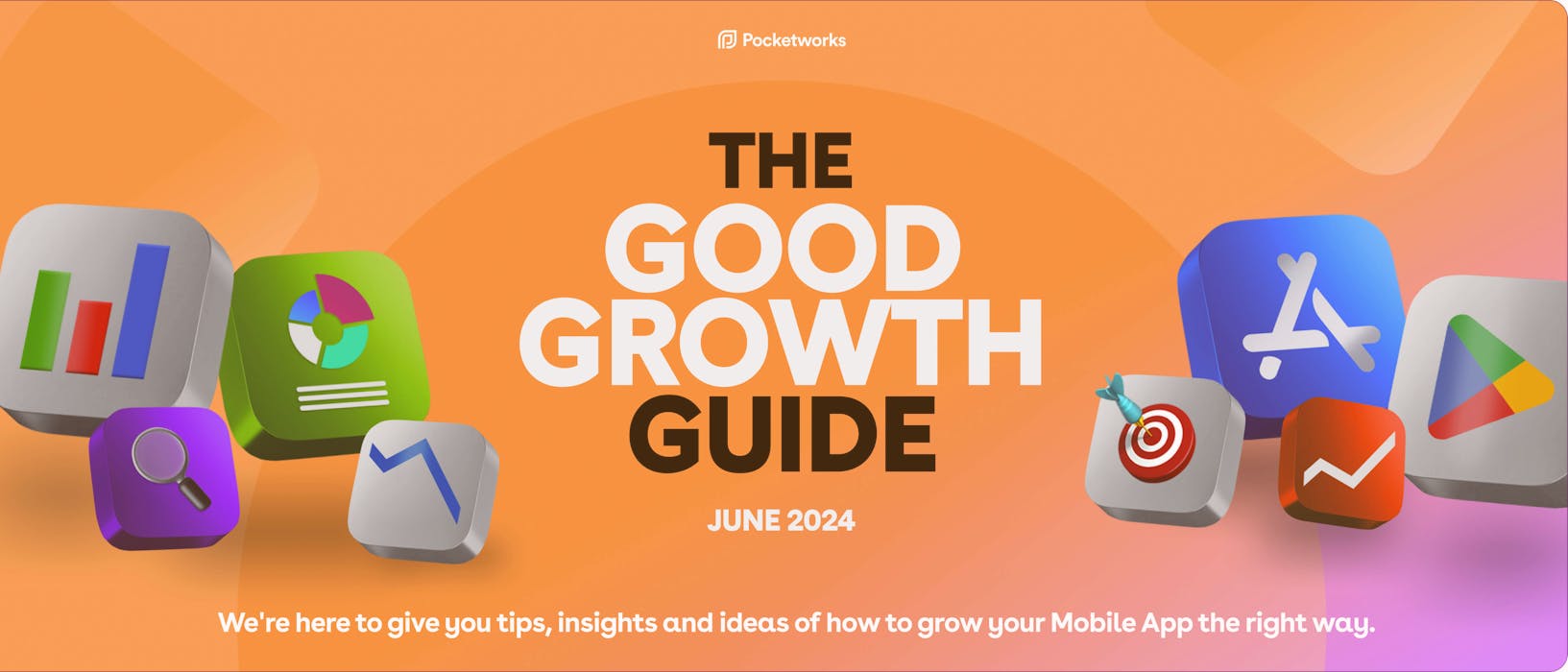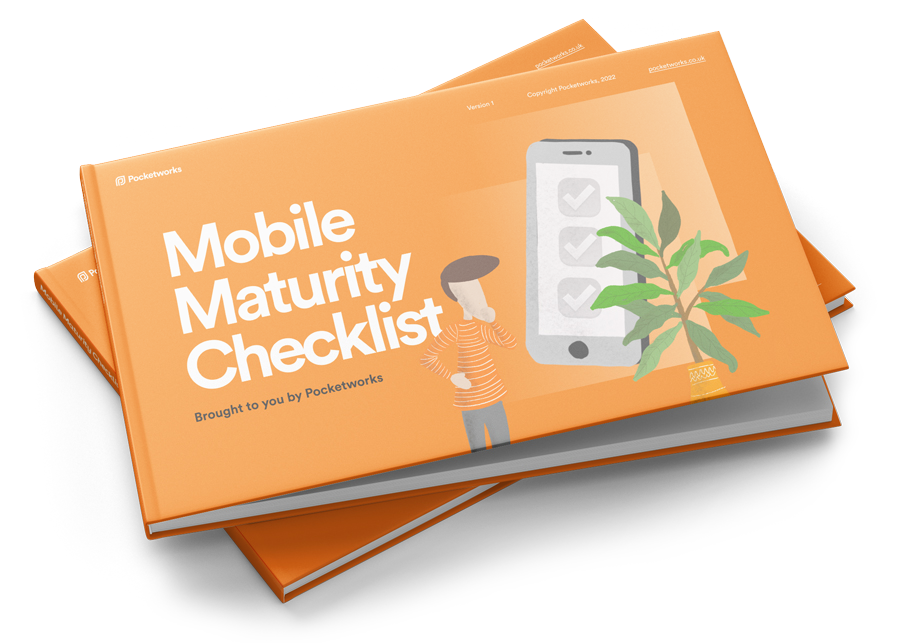The Good Growth Guide: AI for ASO, Competitor Research, and Apple Ad Strategies
Here's our monthly breakdown of all things growth here at Pocketworks. We're here to give you tips, insights and ideas of how to grow your mobile app the right way.
Using AI to enhance App Store Optimisation
TLDR: If you want more downloads, you need to optimise your app store pages. AI can save time in helping you optimise app store listings, but you always need to apply the human touch.
At a talk I attended in April, Yodel mobile discussed using Google’s Natural Language API to boost ASO and it got me thinking. How could we use an AI model (namely, Chat GPT) to do a similar job and help us create new metadata for our app listings?
I started playing around and crafting different GPT prompts that would re-write metadata to meet different criteria (for example, being laser-focussed on a small keyword set, or enhancing Category depth). As with anything touched by AI, you also need to apply a human touch to the generated text - checking for any inconsistencies and ensuring that it makes sense.
I then designed an experiment to test two new long descriptions against the existing listing. It’s early days, but our original baseline page is currently out-performing both of the new variants.
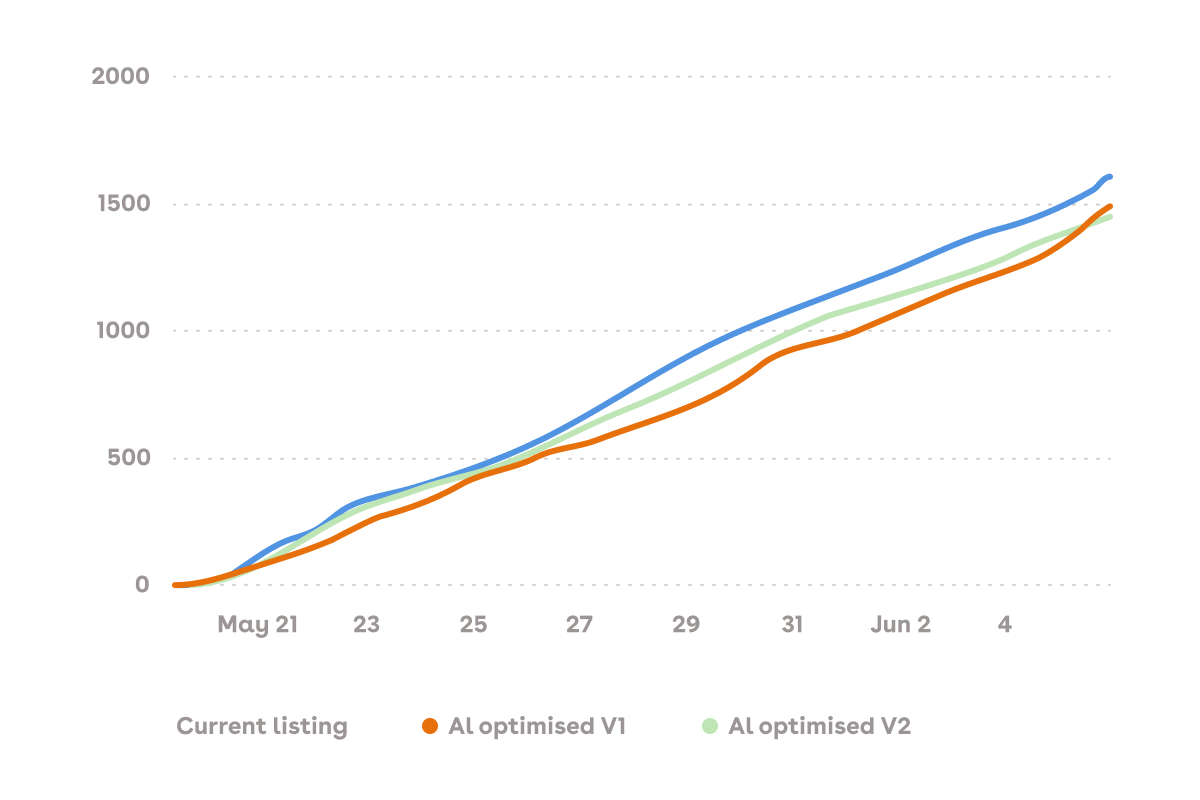
ASO is a constant process of iterating, testing, learning and improving, so once the experiment has collected enough data we’ll see what we can learn (and take) forward into the next one!
Competitor & category research for a brand new app
TLDR: If you’re launching a new app and starting from zero, it helps to start with some analysis. Use a combination of manual research and ASO tools to help you compile competitors, keywords, benchmarks and trends
A year ago, we launched our Cofounders Scheme to invest in entrepreneurial ventures started by people working at Pocketworks. One of the projects I’ve been lucky enough to work on is SoonCall a mobile app designed to help you manage your friendships and call your friends more often.
It’s been fascinating to be involved in launching a brand new app to market - especially one that is pretty niche. At Pocketworks, we use AppFigures as our App Store Optimisation tool and I’ve been using that to:
- Conduct keyword research to help us understand the most important keywords to use in our app metadata.
- Find the apps that are currently ranked for a keyword - uncovering new peer and competitor apps that we were previously unaware of.
- Benchmark and review the category - are we choosing the right category for our app & how is that category trending?
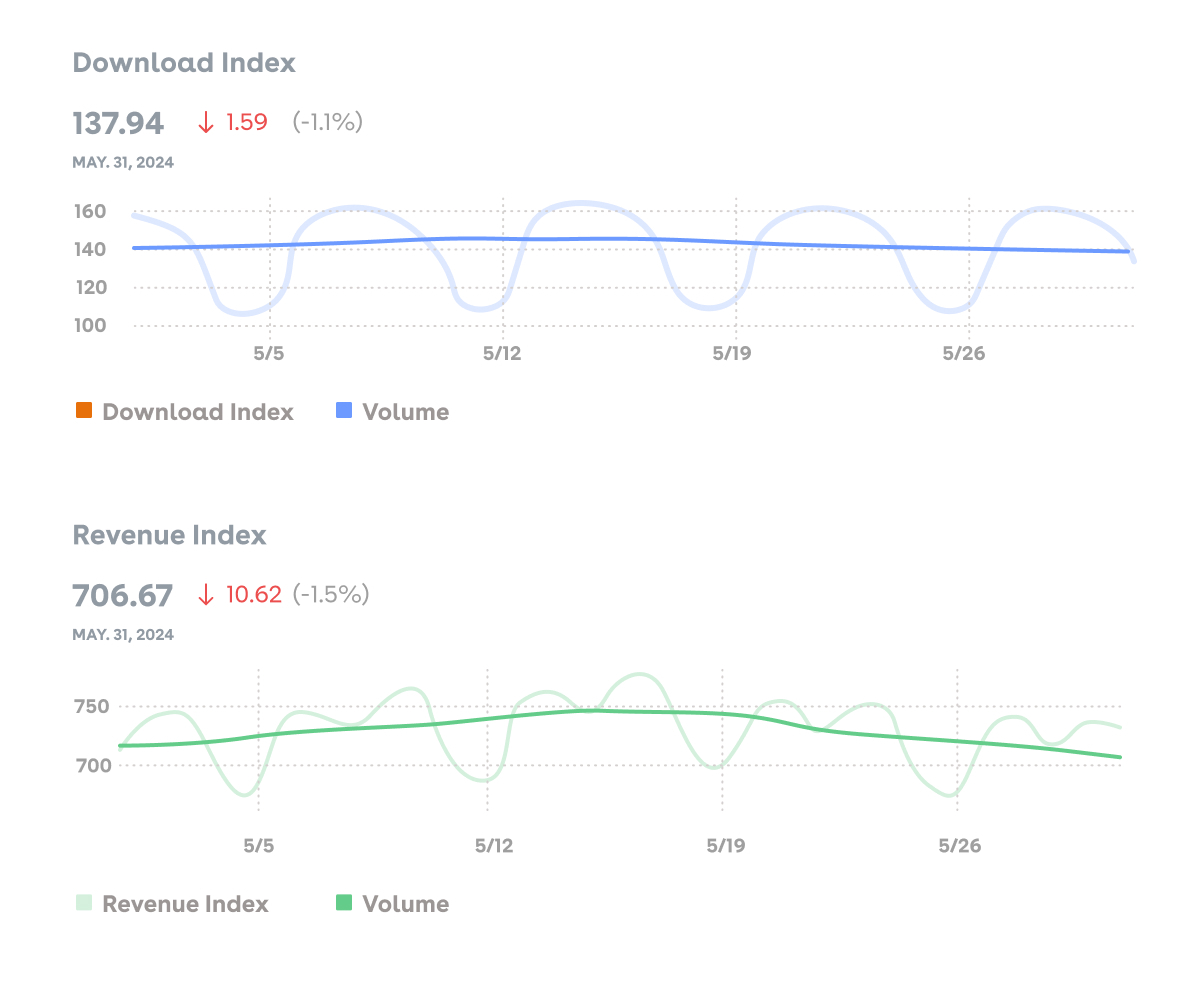
We’ve now launched the SoonCall app on iOS and are keeping an eye on the keyword and category performance. The next few months of growth activity will be focused on raising the profile of SoonCall and building a base of active users.
Why a drop in conversion rate isn’t (always) the end of the world
TLDR: Not everyone who views your app store page will tap to download, and you should keep an eye on how many actually do. However, aA drop in conversion rate is (almost) inevitable when you start driving more traffic volume. Hold your nerve and figure out what is ‘normal’ for your app.
App store conversion rate is, clearly, one of the most important benchmarks to measure how effective your app is at attracting new users. It’s a number I obsess over and am always thinking about how we can improve. One app we have been working with recently is just starting out in a fairly niche market that is dominated by two big apps and lots of smaller competitors.
The tricky task we’ve been trying to achieve is to try and make the app easier to find in the app store (make sure more people see the app) and then do a good job of convincing them that the app is right for them.
We’ve rolled out some Apple Search Ads with a small budget to test & learn and optimised the app store listing. The work we’ve done so far has almost doubled monthly app downloads, but the conversion rate has dropped significantly. The key question becomes - can we stomach the drop in conversions as a trade-off for the increase in downloads?
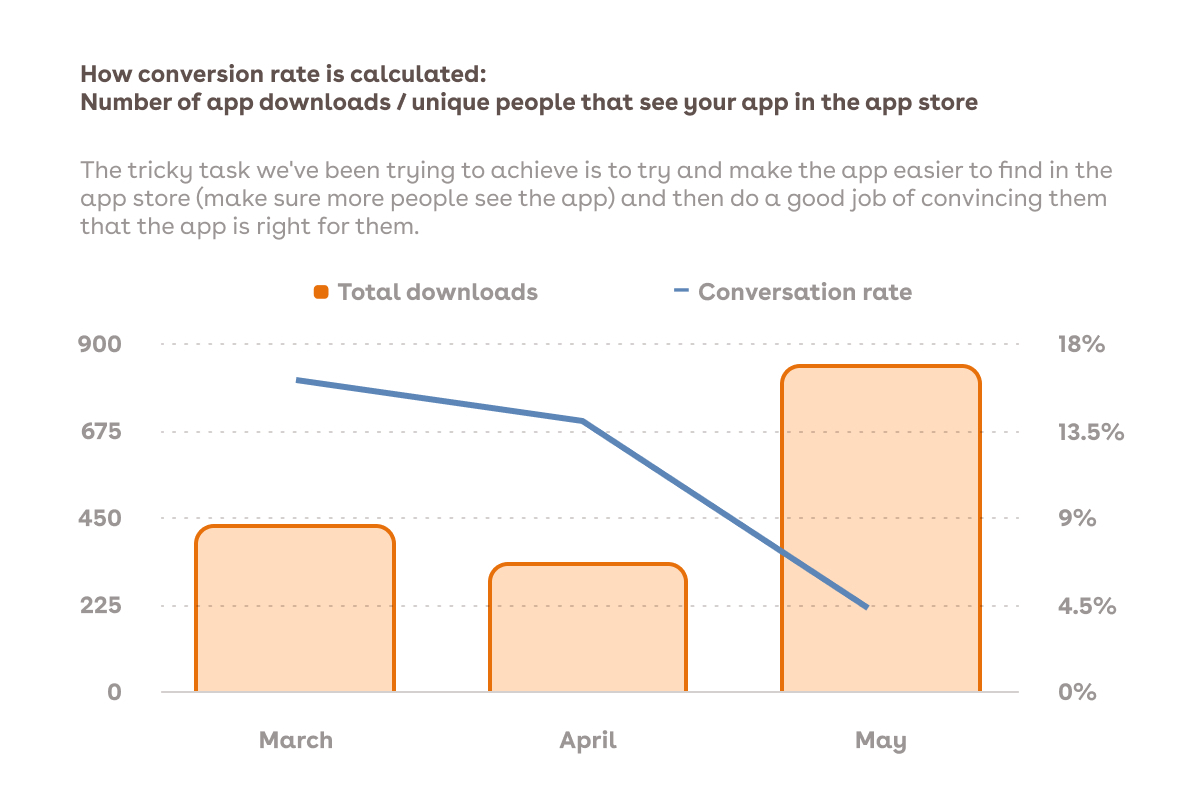
In the short-term, we have decided that it probably is, but work needs to be done to try and increase the conversion rate in line with the latest category and peer benchmarks. Watch this space!
Bidding on brand terms in Apple Search Ads
TLDR: If you want to run adverts on the app stores, you might wonder if it’s worth bidding on your competitors. It is definitely worth bidding on brand terms as long as they do not cost you too much money!
A client recently asked about the logic of bidding on brand terms within an Apple Search Ads campaign.
To clarify, here is a little explainer on how search works. Keywords essentially break down into three main categories.
- Category terms: A user searches for the function of your app. For example ‘Music player’.
- Brand terms: A user searches for your brand specifically. For example ‘Spotify’.
- Competitor terms: A user searches for one of your direct competitors. For example ‘SoundCloud’.
Pros to bidding on brand terms for search ads:
- You ensure that your app has good coverage and brand consistency when someone searches for your brand.
- Bidding on brand terms (should) stop competitors appearing before your app in search results.
You increase the cost for any competitors that are bidding on your brand terms.
Cons to bidding on brand terms in search ads:
- You risk cannibalising your organic traffic. This means that, unless you measure and monitor really closely, you might end up paying for the downloads you would have achieved anyway for free.
How to know if you are cannibalising your traffic
My advice here is to keep a very close eye on your download numbers by source and track how they trend. Ideally, you should see overall downloads increase when you start running an ad campaign. If you don’t see the jump in your overall download volume, it might indicate that you are cannibalising your traffic.
You also need to keep a very close eye on the Cost per Tap (CPT) and Cost per Install (CPA) for your brand terms. Generally speaking, you expect Category terms to have the highest CPT & CPA, followed by Competitor terms and Brand terms should be cheapest. If your brand terms look expensive, you need to take a closer look. Consider pausing any paid activity on brand terms and see if that affects your overall download volume.
Hope that all makes sense! If you have any questions, or comments please drop them in below or send me an email - lucy@pocketworks.co.uk.
